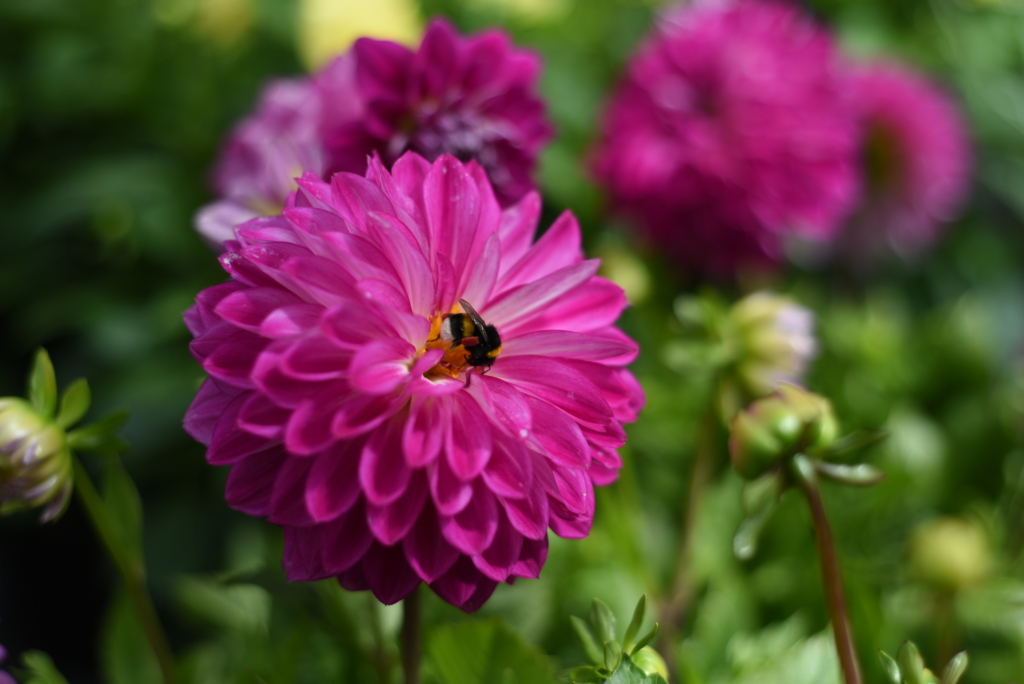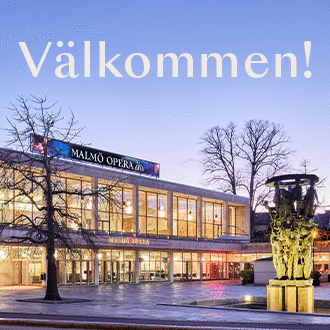Even though women represent roughly 50% of students at the Bachelor’s and Master’s levels, only 33 % of researchers are women, as reported in the latest Science Report from UNESCO. The International Day for Women and Girls in Science, an official UN day, has been established to globally lift and encourage science among women and girls. Lundgård interviewed four scientists about their research and motivation for joining their field of science.
Elna Heimdal Nilsson
Senior lecturer in Combustion Physics
I’m going to save the world!
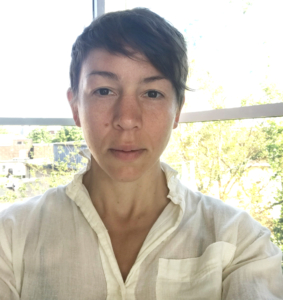
Elna Heimdal Nilsson, senior lecturer in Combustion Physics, researches bio- and fossil fuels. With a background in chemistry and atmospheric science, she is involved in many projects spanning various disciplines. “The boundaries between many scientific fields, like chemistry, physics, biology and mathematics, start to fade and become more blurred, because we can’t manage without each other”, she says.
What was it that brought you into chemistry and atmospheric studies?
“This will sound super cliché, but I’m going to save the world! I decided that fairly early, when I was 13 or so, when I realised that the issues with fuel and energy… Someone had to fix that! So I studied chemistry, but for my PhD thesis about greenhouse gases in the atmosphere, I went back to the environmental track.”
Besides her research she also coordinates and teaches within the metrology programme at the Faculty of Science. She points out that saving the world comes with a lot of hard work , although she never really planned which steps to take. “I have never had a career strategy. I have a tendency to throw myself head first into new things. You never know what an idea can turn into”, she says, and continues, “I think that working hard is more essential than having a plan, and taking chances and opening doors as they come. But it is always great fun!”
She and a colleague just got granted money to start up a research project looking at alternative fuels for aviation. For instance they will look at the Swedish forest industry as a possible source for fuel. Several companies, including SAS, will partake in the project. “This is the biggest thing that has ever happened in my career”, Elna Heimdal Nilsson says, and adds that partaking in these large collaborations and being a manager for a research team is part of the fun for her in doing research.
Anna Persson
Researcher at the Centre for Environmental and Climate Science
Cities are more biodiverse than one could imagine
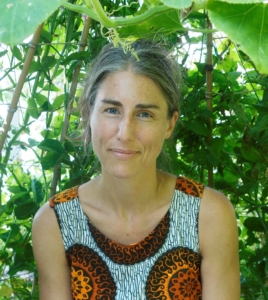
Private photo: Maja Persson
Anna Persson, a researcher at the Centre for Environmental and Climate Science, has a double degree in landscape planning and biology. She wants to bridge the gap between urban planners and ecologists, to create cities where nature can thrive. “Cities are more biodiverse than one could imagine. We have seen that bumble bees are actually bigger in urban areas, perhaps because they need to be stronger to fly longer distances to collect food, she says.“
The goal with her research is to understand the differences for biodiversity of building cities of lower density, with buildings intertwined with smaller green spaces, compared to compact ones, with larger nature areas outside dense areas of dwellings. “So far we don’t know the answer yet, but we have seen that gardens are key for pollinators in urban areas”, she says.
Anna Persson’s research is very dependent on the weather and the seasons, where most of the warm, sunny days of summer are spent working outside with a net, collecting insects and counting plants. “I visit parks, allotments, gardens, pasture grasslands and document both the insects and the plants they forage from and pollinate. It’s a lot of fun but also quite tiring work”, she says.
She is driven by the urge to put together her data and try to puzzle the pieces together, and especially with her passion for nature and ecology. “Both of my parents are biologists and we’ve always been out in nature a lot, even when we celebrated the holidays. So for me it has always been given that nature is interesting and important.“
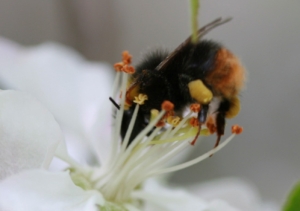
apple blossom. Photo: Anna Persson
Her heart beats extra for bumblebees and as a part of her research she would like to figure out how and where they collect food in cities, something that is still a question mark. Her favourite bumble bee is the bright orange moss bee, but her dream is to see the bumblebee species found in the northern mountainous part of Sweden.
Ruth Pöttgen
Experimental particle physicist
The biggest discoveries have come rather unexpectedly

Ruth Pöttgen is an experimental particle physicist whose motivation is to understand the fundamental building blocks: what everything is made of. Now she is on a quest to find the particle behind dark matter. “We have the standard model that explains all particles, but it doesn’t give us the full picture, for instance it only gives 5 % of all matter”, Ruth Pöttgen says.
She explains it like a map: a map of Sweden works perfectly fine for Sweden, but it can’t be used in Norway. Similarly, the standard model can’t describe dark matter.
More specifically Ruth Pöttgen wants to determine one of the most important properties of a particle, its mass. “The mass could be anything, a tiny fraction of an electron mass, or several solar masses.”
With the help from theoretical models of the universe, she and other particle physicists have an idea of where to look. At the particle accelerator in CERN, where Ruth Pöttgen did her PhD studies, they searched in the heavier masses. Now she is involved in developing a new detector that will look for dark matter in the smaller masses. “What if we see a signal and we realise that we have been looking for dark matter in the wrong place for decades? And there it is, that would be really cool”, she says.
She cherishes the large collaborations of scientists, such as CERN, both for bringing together a plethora of expertise, and for bringing diversity into the field. “At some point at CERN I was the only woman in a group of ten people, but it didn’t matter in any way, because there are so many differences between people, and gender is just one of them.”
The pursuit of finding dark matter is linked with the urge to understand the universe, for the sake of science. “I sometimes get the question ‘what can this be good for, what can we do with dark matter’, and, probably not much? But that’s also not what drives me. The biggest discoveries have come rather unexpectedly, she says. “
Sanna Alwmark
Planetary geologist at the Department of Geology
I still love dinosaurs!
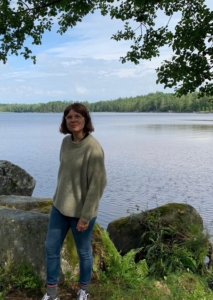
Småland which used to be a crater.
Private photo
Sanna Alwmark, a planetary geologist at the Department of Geology, studies meteorite impact craters. Both from a perspective of what happens when the crater forms, but also on a global scale, how Earth is affected by large impacts, such as the meteorite which killed the dinosaurs.
A part of the work is to map how often impacts take place and if there is a regularity. “There are roughly 200 discovered impact craters on Earth, and two or so are added to that list each year. But it becomes harder to find them, since many are covered by forests or disguised as lakes”, Sanna Alwmark says.
“A circular structure doesn’t have to be an impact crater, it could also be caused by a volcano. Typical collisional speeds of asteroids and comets with Earth are 15-30 km/s which give rise to unique pressure and temperature conditions. This alters the structure of the minerals in the ground, which you don’t see after any other geologic process” Sanna Alwmark explains.
She and her team go on field work a couple of times a year, where they bring back rocks to investigate the material, looking for the “shocked mineral” signature. “I really like to go deep and love to look at crystal structures for several months, just to understand how the impact affected that specific mineral.”
What made you interested in planetary geology?
“Well, I’ve always liked space, and it is also strongly related to the fact that I still love dinosaurs. So, it’s a combination that gives both. I am fascinated by how the solar system works”, she says.
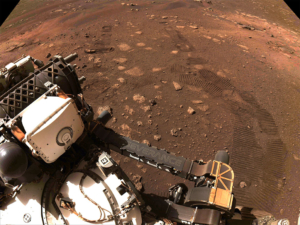
Photo: NASA/JPL-Caltech
Unravelling the solar system is something she works with through her involvement in the NASA Perseverance rover mission that is drilling on Mars’s surface. Perseverance is collecting samples of rock while also searching for signs of ancient microscopic life. The mission also aims to understand the geology and ancient habitability of the landing site. “The scientific potential of the samples collected by Perseverance is great, they contain information about the earliest evolution of Mars”, she says, and adds, “They could potentially help to answer one of the central outstanding questions in science, ‘are we alone or not?’”.
To summarise,
Even though Lund university follows the global trend with an uneven ratio of women researchers, our interviewed scientists said that they see change coming, especially in the younger generations. All of them highlight the importance of collaboration and how teamwork both are key in successful research and to make you feel at home.


